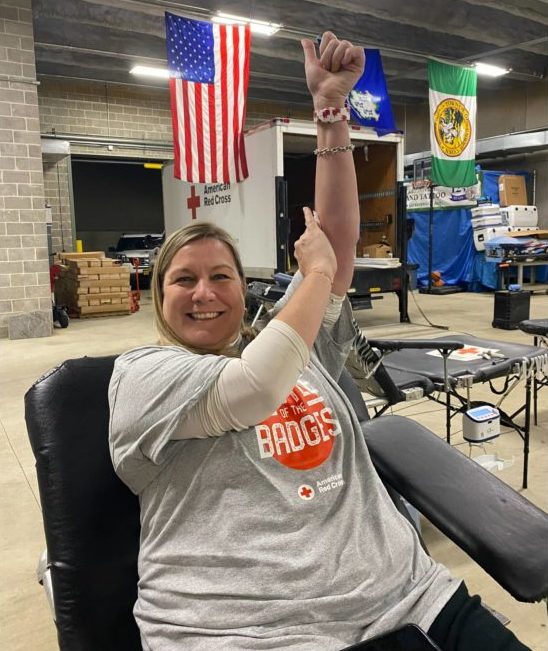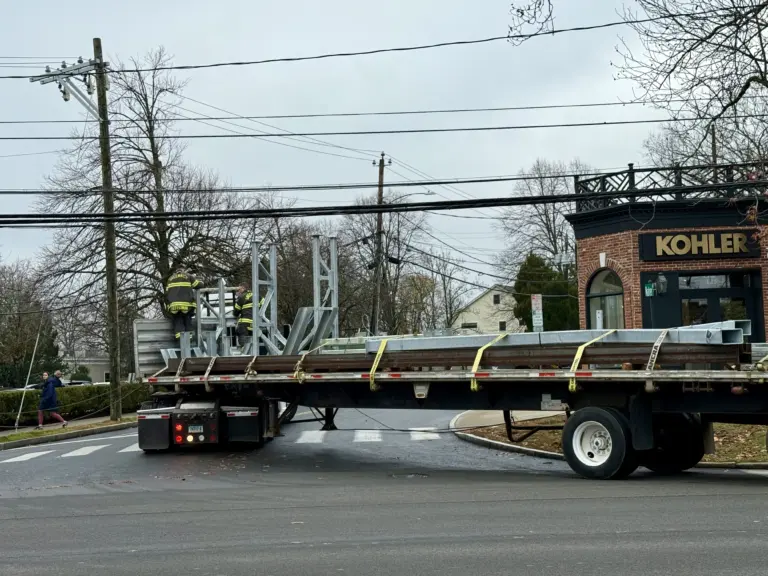By Stephanie Dunn Ashley

I went to a school where service was part of the curriculum. From my earliest years at Convent of the Sacred Heart, we were encouraged to give back to the community in ways big and small, and I have worked hard to instill this desire to give back in my own daughters. Aside from volunteering in the community with schools and with Greenwich EMS, my girls and I also donate blood together. Additionally, my husband, who was born and raised in the UK, has now joined us and started his blood donation journey. But not enough members of our generations roll up their sleeves and we need to change this.
Currently, the American Red Cross is experiencing an emergency blood shortage as the nation faces the lowest number of people giving blood in 20 years. The drop in blood donors is likely attributed to the evolution in how people engage in communities where they live, learn and work. COVID-19 accelerated those changes and significantly impacted the landscape of blood donation in the U.S. As more people conduct their lives more remotely, the Red Cross’ ability to meet people where they are to host blood drives has become harder.
During the height of the pandemic blood drives sponsored by high schools, colleges and universities – where many people like my daughters make their first blood donations – were put on hold as schools went to virtual learning and pulled back or restricted on-campus activities to protect student health and safety. This was felt in a staggering drop in blood donations from those who may typically give at these drives.
About 260,000 donors aged 18-24 gave blood with the Red Cross in 2021 – less than half of what we saw just two years earlier in 2019. Young people have tremendous power to help save lives now and build a generation of blood donors for the future. While we experienced a small increase in the number of donors in this age group in 2022, there is still much room for growth to return to pre-COVID levels of young blood donors.
At the same time, the U.S. also experienced a retirement boom. A 2022 report from the U.S. Federal Reserve shows the retired share of the U.S. population increased slightly over pre-pandemic levels, with concentration among those 65 and older. As people get older, they are more likely to know someone who has needed blood or may have received blood products themselves, and now with more opportunity to donate an hour of time to help save a life, many seized that opportunity. The number of Red Cross donors who are 65 or older has increased each year since the pandemic, growing by nearly 25% from 2019 to 2022.
With fewer people donating than at any time in the last 20 years, blood shortages are not uncommon in the United States. However, one of the learnings from a Red Cross survey is that more than one-third of the public has never considered that blood may not be available when they or a loved one need it. The only way to prevent shortages like the one we are experiencing now is for individuals to give blood throughout the year and to organize blood drives so donors can give in their communities.
I encourage you to talk to your neighbors, sisters, brothers, parents, kids, nieces, nephews, grandchildren and their friends about the importance of donating blood. Donating blood is a simple thing to do but can make a big difference in the lives of others. The donation process from the time you arrive until the time you leave takes about an hour.
• The first step upon arrival at the blood drive or donation center is registration where individuals provide their name and ID.
• The second step is health history where potential donors will be asked questions during a private and confidential interview about their personal health history and places traveled. It will also include a mini-physical where staff check temperature, hemoglobin, blood pressure and pulse.
• The third step takes donors to the donation chair where we collect the blood donation. Staff will clean the donor’s arm, and following a quick pinch, the bag will start filling – that only takes about 8 to 10 minutes. When approximately a pint of blood has been collected, the donation is complete, and a staff member will place a bandage on the arm.
• The fourth and final step is refreshments. Donors will enjoy snacks and water or juice for about 10 to 15 minutes before leaving the drive or donation center.
Please don’t wait. To make an appointment, download the Red Cross Blood Donor App, visit RedCrossBlood.org or call 1-800-RED CROSS (1-800-733-2767).
Stephanie Dunn Ashley is the CEO of the American Red Cross Metro NY North Region, a Greenwich volunteer firefighter and EMT, and serves as President of the Board of Directors of the Cos Cob Fire Police Patrol.




